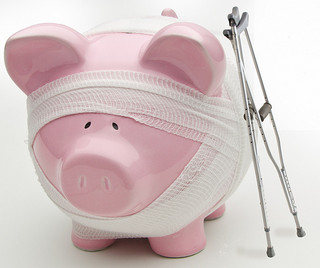Bankruptcy is an option for people who are in well over their heads in debt. There are two options for individuals when declaring bankruptcy Chapter 7 and Chapter 13 each has its own pros and cons.
Types of Bankruptcy
Chapter 13 bankruptcy, or Wage Earner’s plan, is a way for debtors to restructure their payment methods/schedules. The way that it works is by allowing debtors to propose a 3 to 5 year plan to repay their creditors. Chapter 13 has an advantage over Chapter 7, because it allows debtors to keep assets that might otherwise be liquidated in the aforementioned style of bankruptcy.
Chapter 7 bankruptcy, also known as liquidation or “straight” bankruptcy is a plan/case in which a trustee gains possession of the nonexempt assets and liquidates them to pay back as much of the debt as they can. Chapter 7 may result in the loss of property and most cases debtors are given a discharge, after the liquidation process, in which creditors can’t take any more collecting actions against the debtor.
Relief With a Cost
This may sound like a quick and easy escape to debt. However, declaring bankruptcy will negatively affect your credit. The bankruptcy could stay on your credit report for 10 years. Bad credit can limit your ability to own a home, a car, and other assets, as well as limit your employment opportunities.
Many adults with heavy over-hanging student loans turn to bankruptcy in hopes of a release however, that may not be the best plan. Rarely is student loan debt discharged through bankruptcy. Each type of personal or individual bankruptcy option allows for some discharge of debt, however student loan debt will not be discharged unless a person can successfully claim “Undue Hardship” for him/herself or his/her dependents.
Undue Hardship is determined by the Brunner Test that requires you to show:
- You cannot pay your student loans and maintain a minimal standard of living.
- Your circumstances (often disability related) are such that the hardship is long-term and not within your control.
- You have made good faith efforts to repay your loans.
These types of cases rarely happen because a court may decide that when you file 7, or 13, you will have a better chance to work at paying off the student debts. Once your assets are liquidated and remaining debt discharged, or you have a 3 – 5 year payment plan set up, you are able to focus more time and energy on your student debt.
Other Options
One option to consider is forbearance, which can be accomplished through your student loan provider. What this does is it allows the debtor to temporarily stop payment on his or her loans. The length of time and other stipulations are up to the loan provider. However, make sure you check with your loan provider about the interest. Depending on the loan type, it could continue to accrue interest while under forbearance
Another option is debt consolidation. While this won’t completely wipe away the loans like a bankruptcy it could be the little bit of reprieve that you and your family need. Loan consolidation is a common practice in which a lender will loan you the money needed to pay off your existing loans. The interest rate on this new loan is usually some kind of weighted average of the interest on all the loans you paid off. This will lead to an overall lower interest rate.
Bankruptcy should be used as a last resort to debt. Even then, it’s not ever an easy choice to make. Make sure to research the topic further or even contact an expert in the field if you are considering this drastic option.

